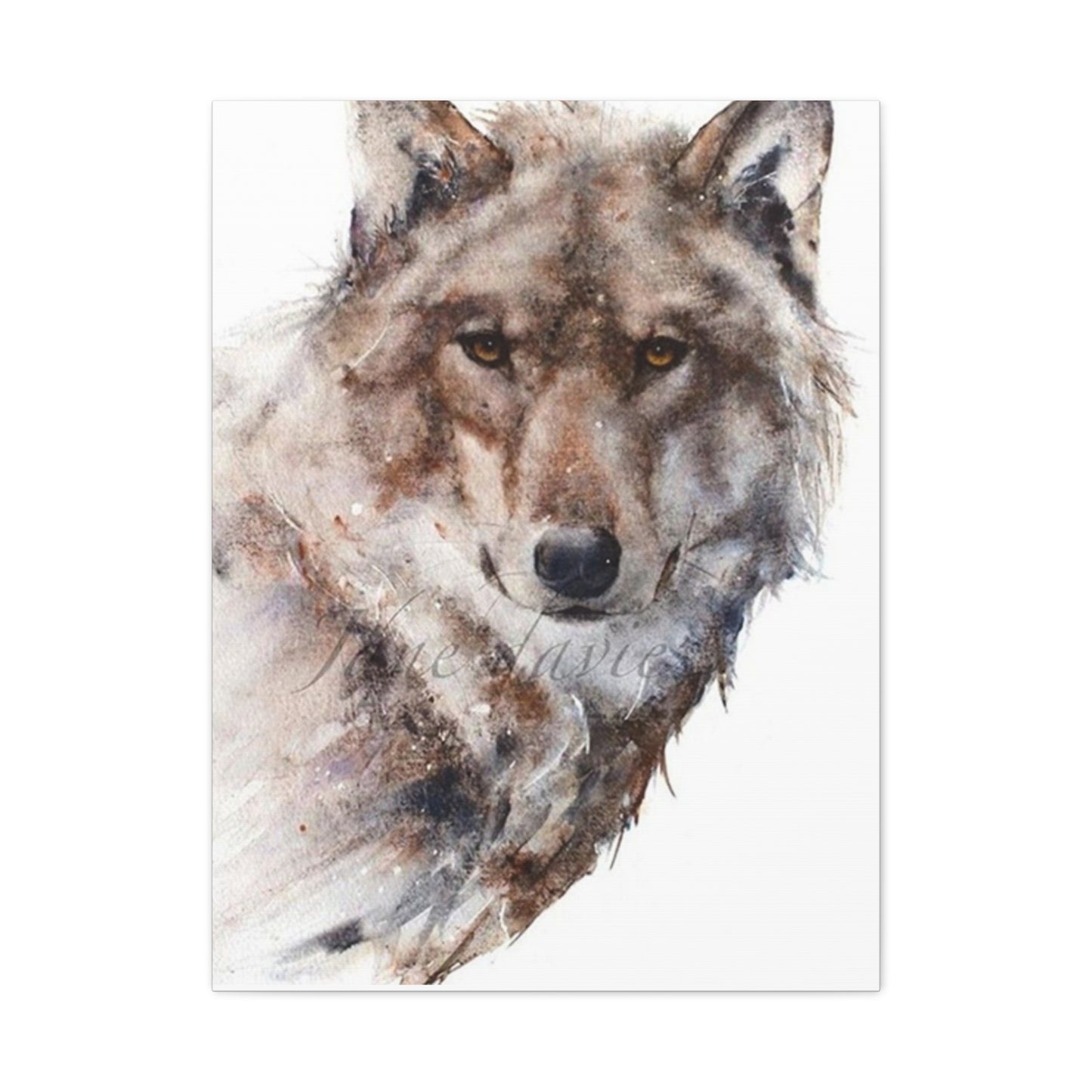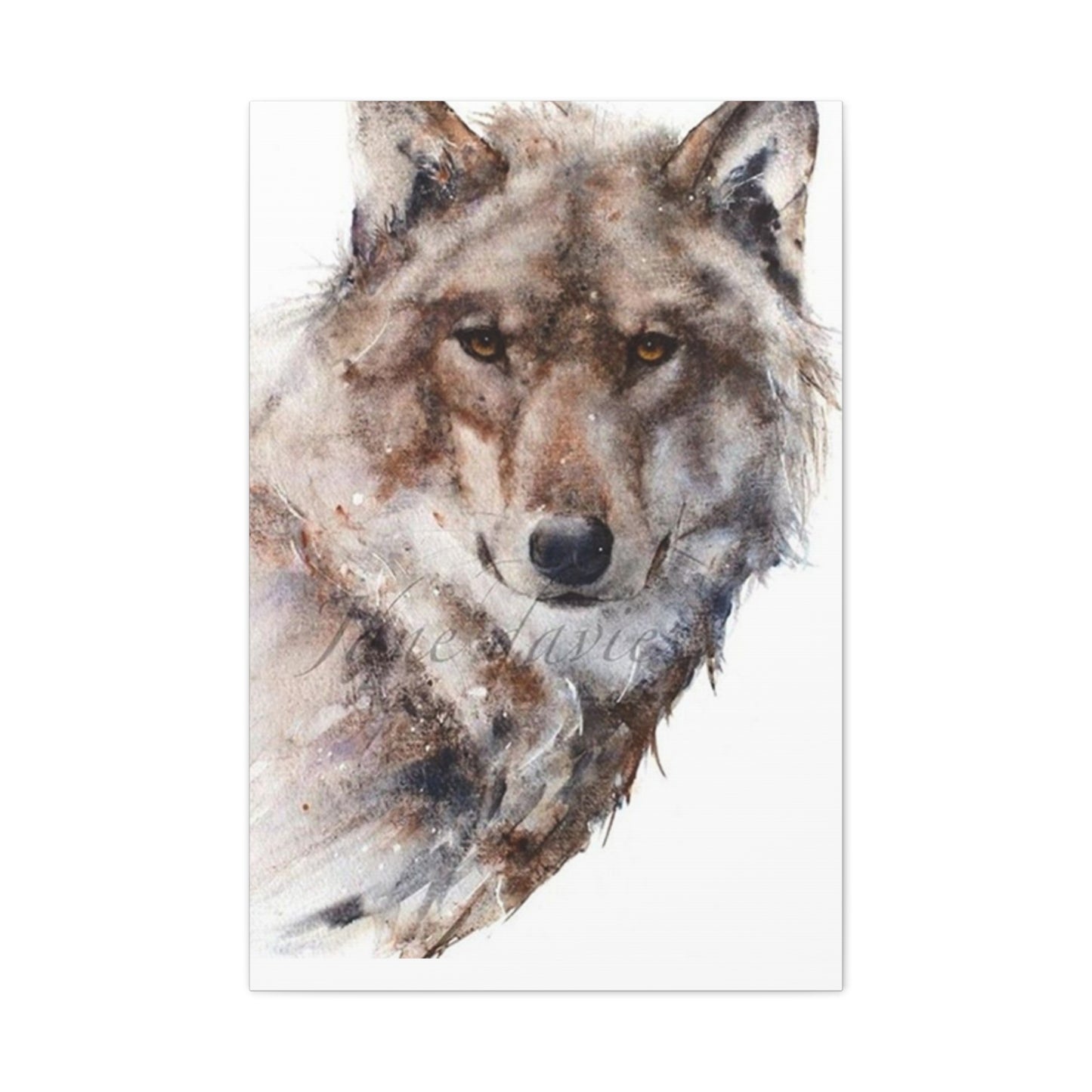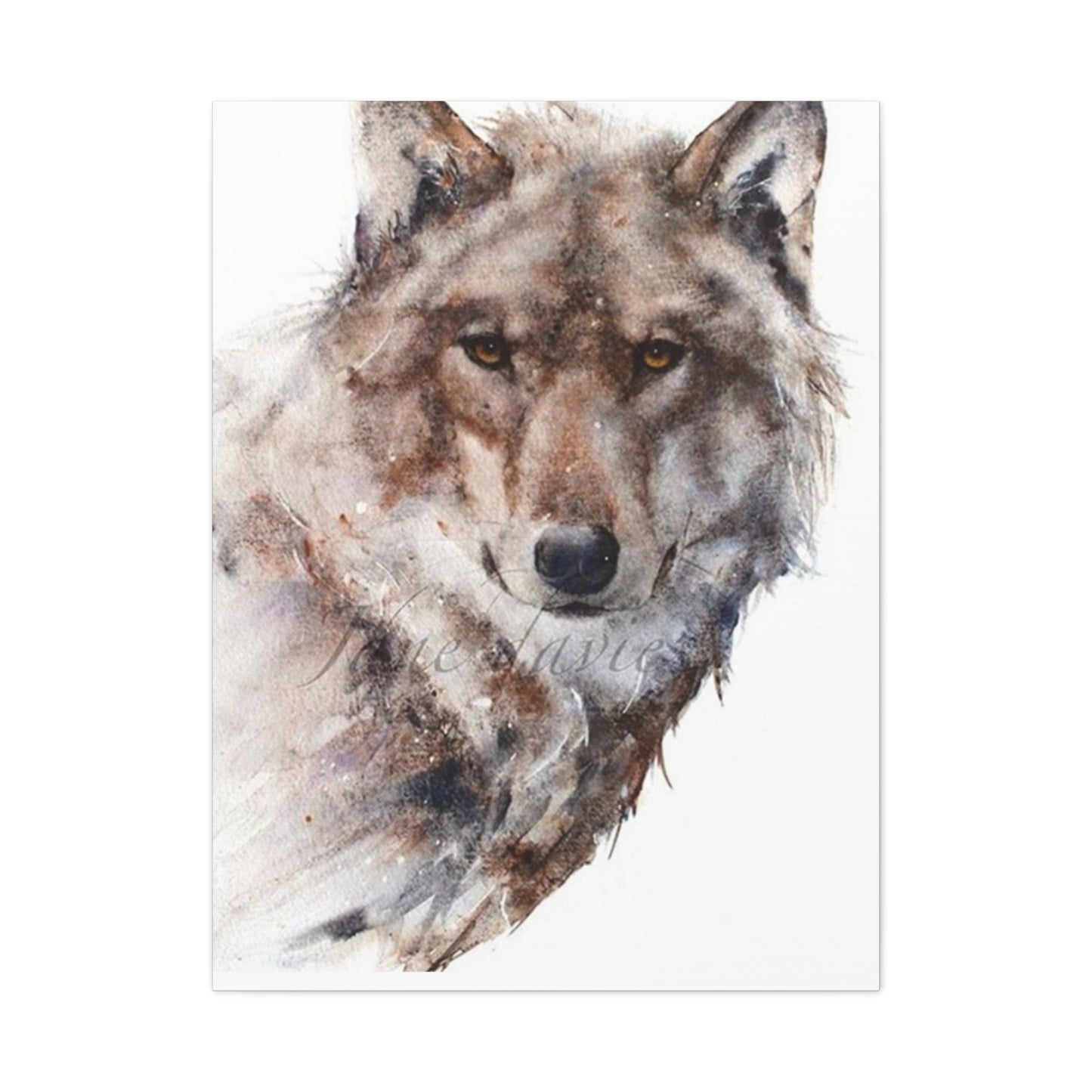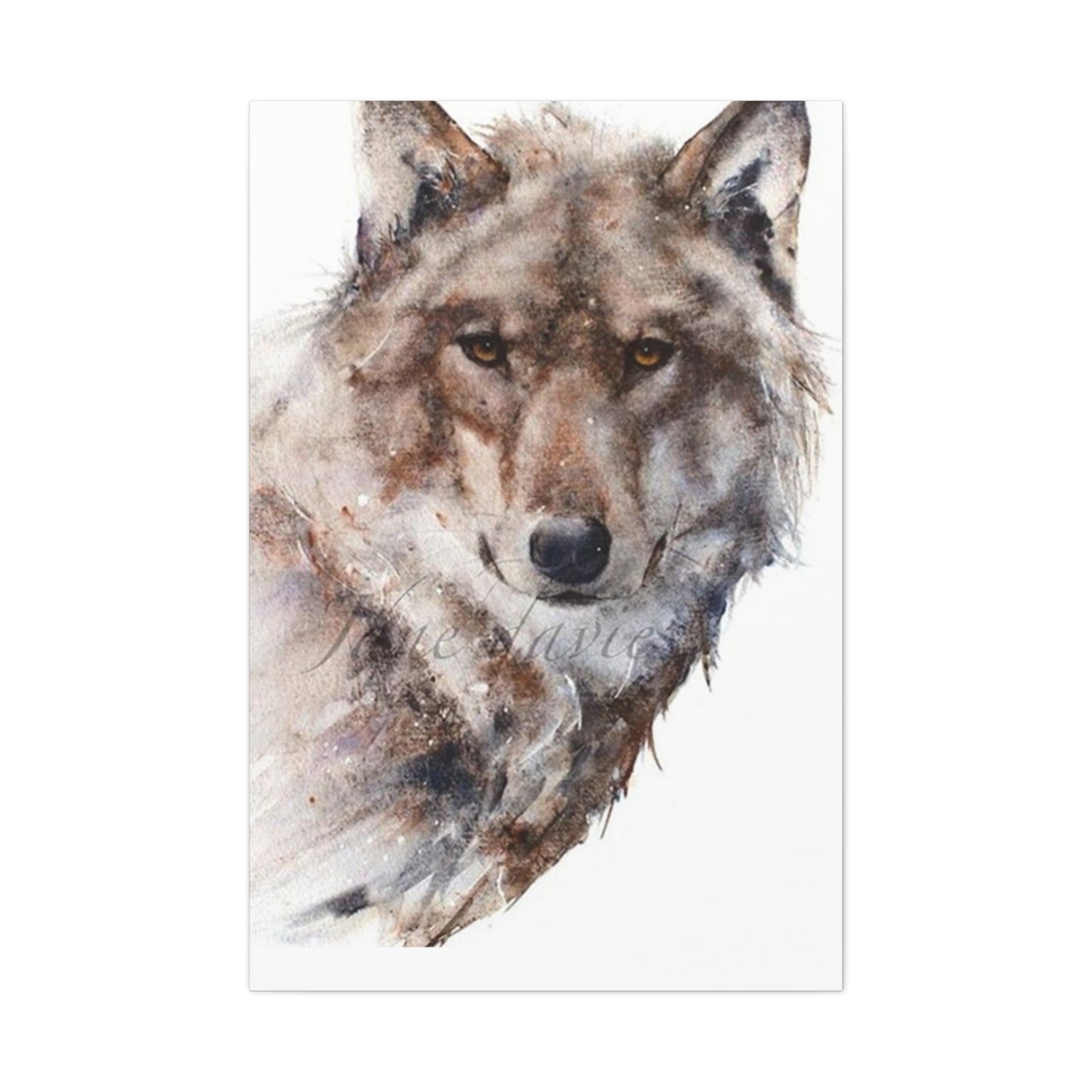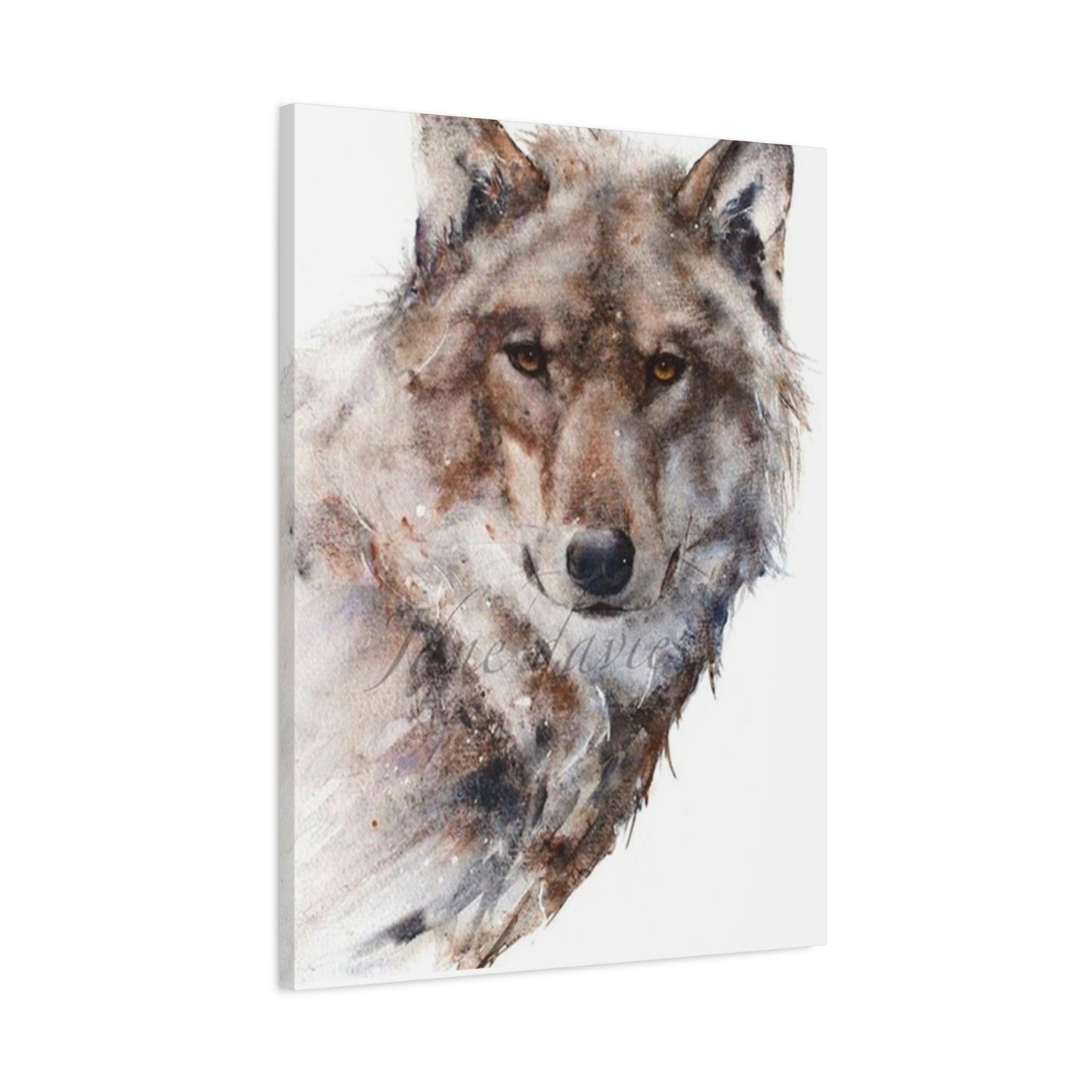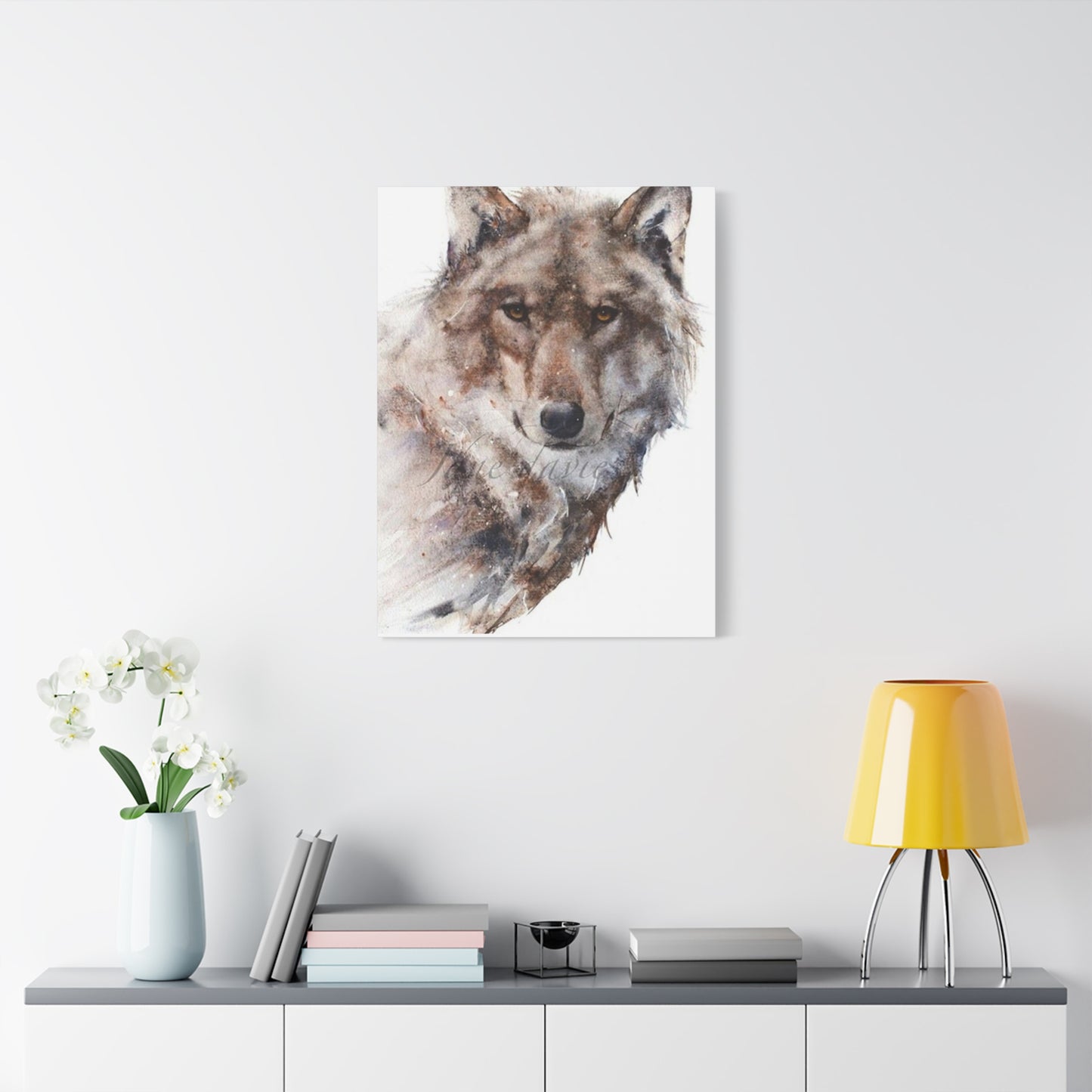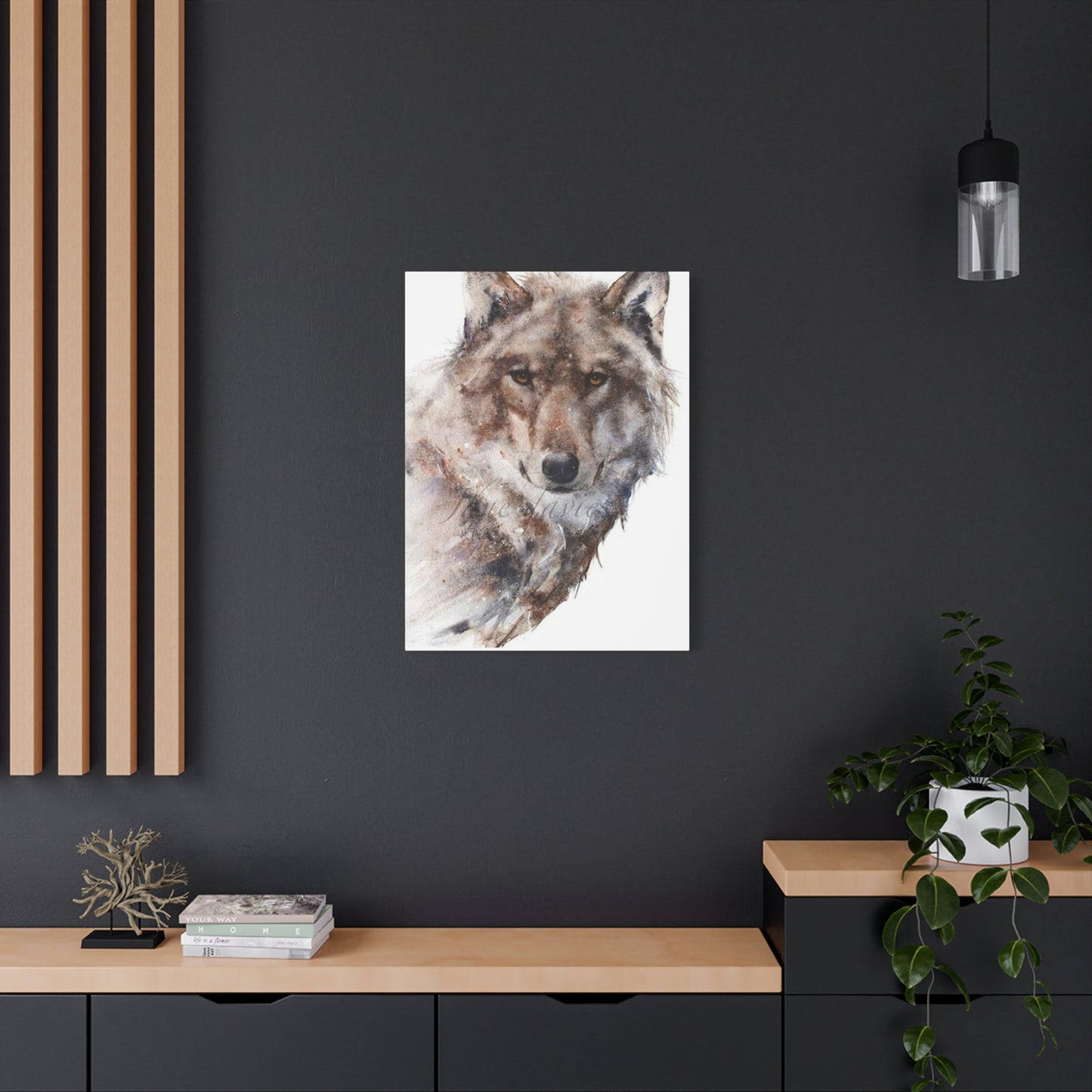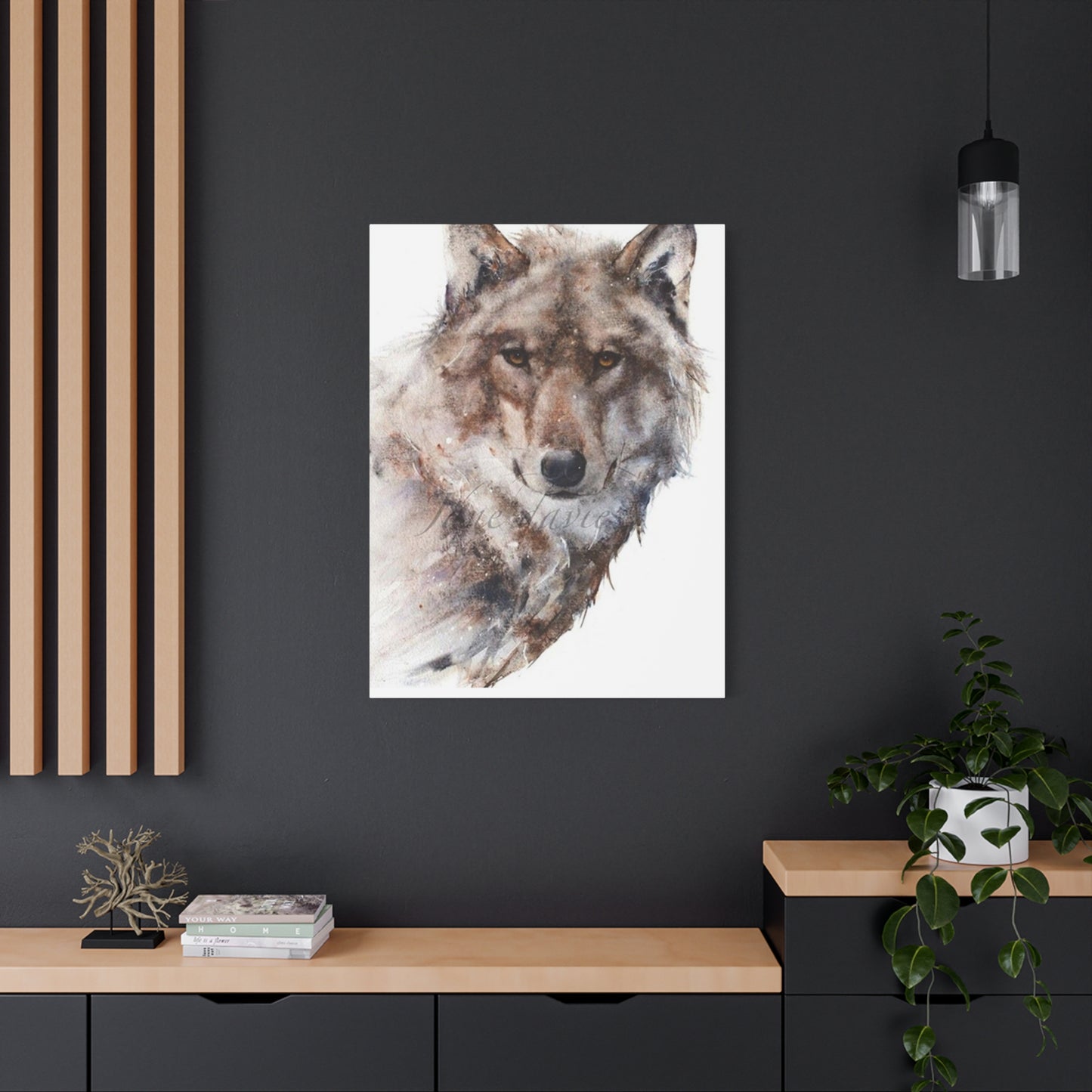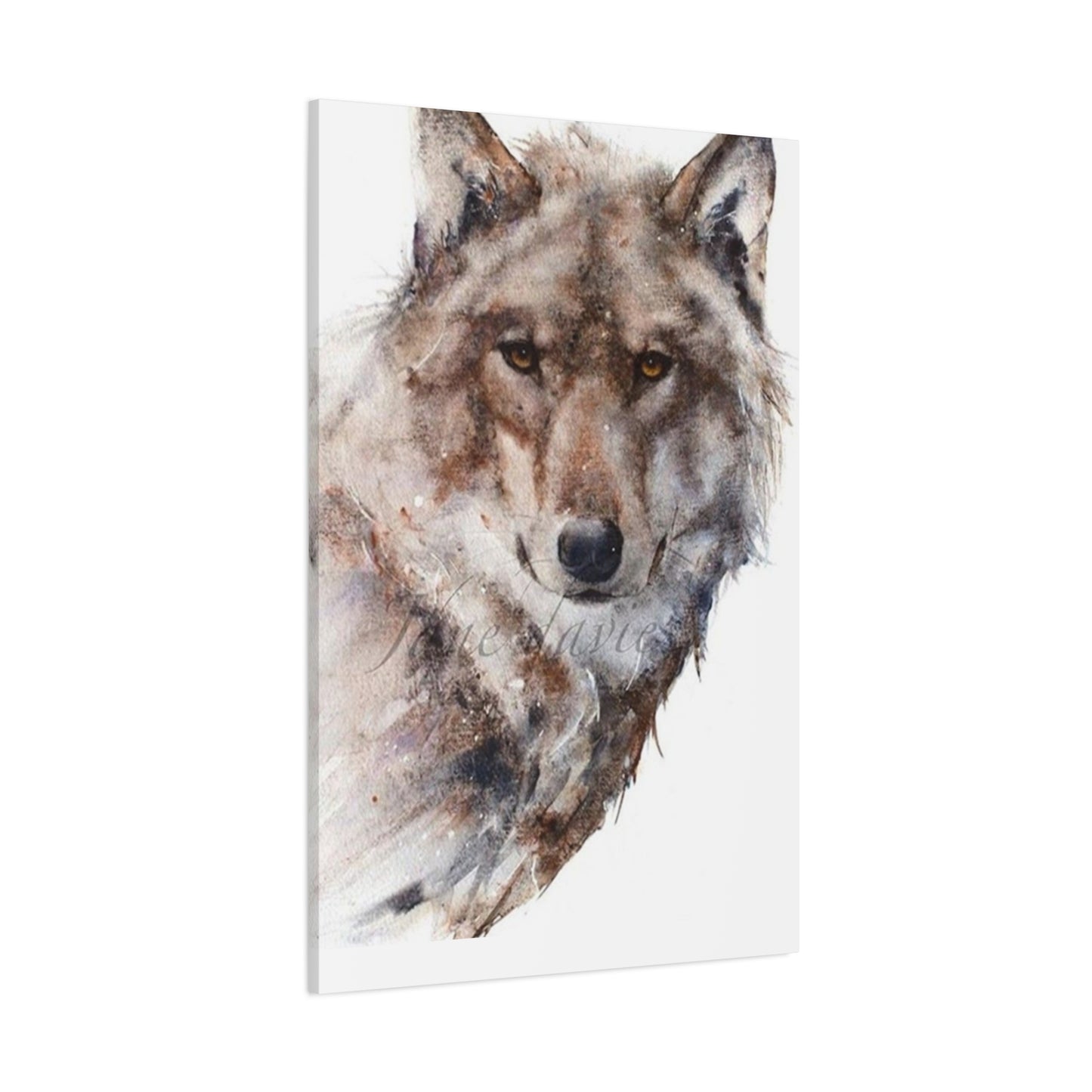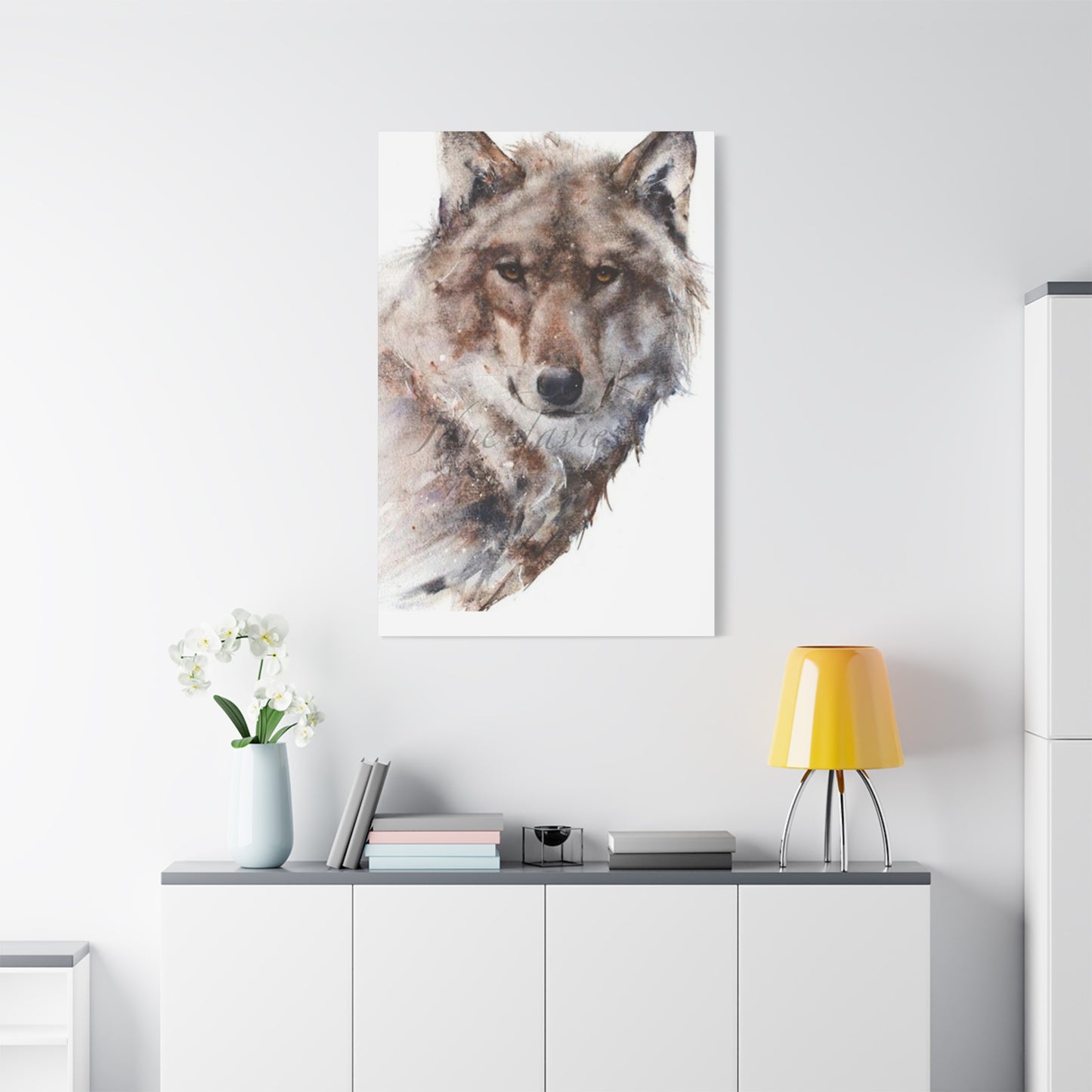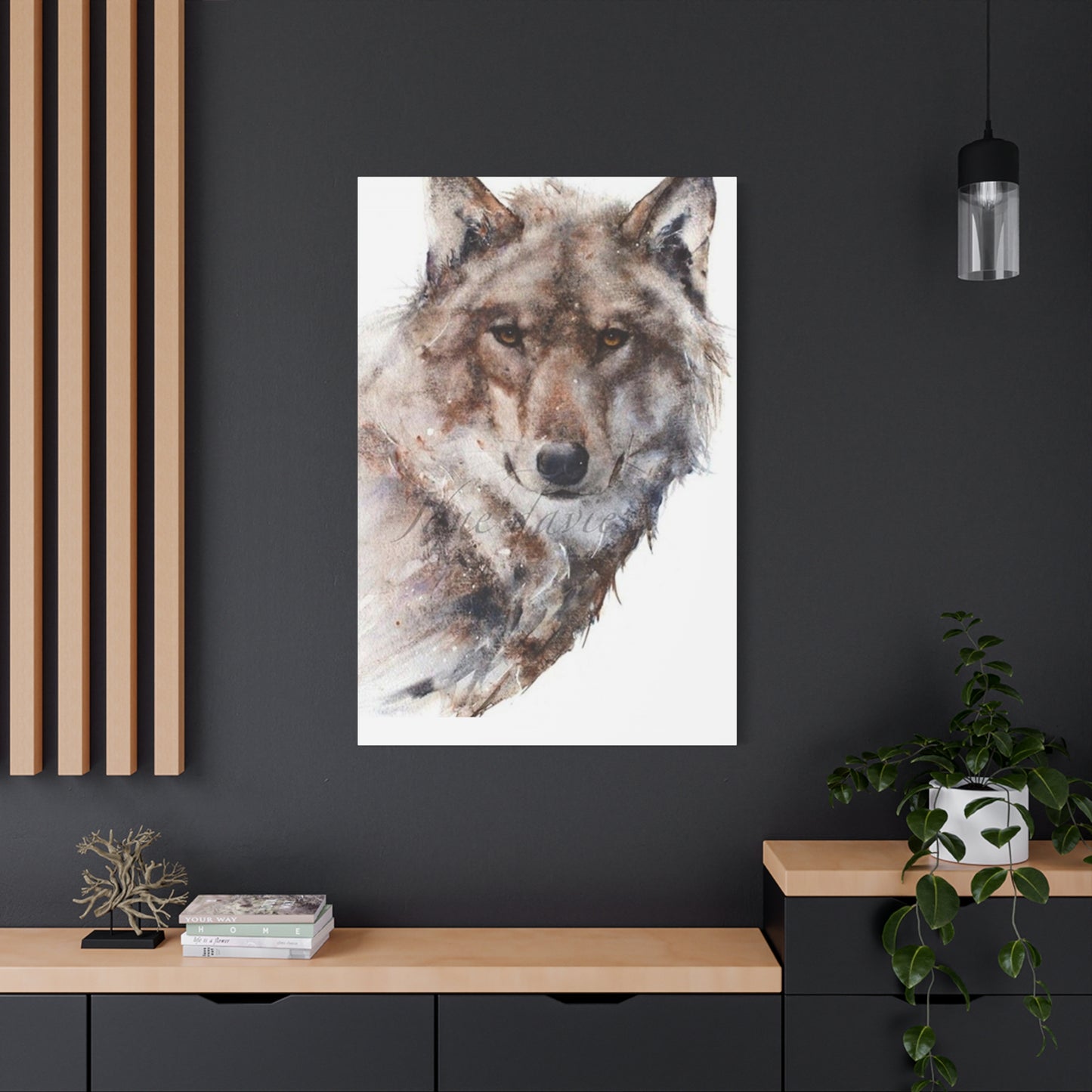The Lone Wolf: Understanding the Emotional Depth of Solo Wolf Painting Wall Art
Wolf paintings have emerged as one of the most sought-after forms of artistic expression for those who wish to bring the raw beauty of nature into their homes. These magnificent creatures, symbols of strength, loyalty, and freedom, have captivated human imagination for centuries. When translated onto canvas through skilled artistry, wolves become powerful focal points that can completely redefine the atmosphere of any room. This comprehensive guide explores everything you need to know about selecting, displaying, and appreciating wolf paintings that will elevate your home décor while honoring the untamed spirit these animals represent.
The allure of wolf imagery extends far beyond simple decoration. These paintings carry deep cultural significance, represent personal values, and create emotional connections that resonate with viewers on multiple levels. Whether you're drawn to the haunting beauty of a lone wolf silhouetted against a full moon, the dynamic energy of a pack moving through snowy terrain, or the intimate portrayal of these animals in their natural habitat, wolf paintings offer endless possibilities for artistic expression and personal connection.
Premium Wolf Paintings That Command Attention
Selecting premium wolf paintings requires understanding what separates exceptional artwork from ordinary reproductions. The finest pieces demonstrate masterful technique, emotional depth, and attention to detail that brings these magnificent animals to life. When evaluating potential additions to your collection, consider the artist's ability to capture the wolf's essence through careful rendering of fur texture, accurate anatomical proportions, and the penetrating gaze that wolves are known for.
High-quality wolf paintings often showcase the animal in various poses and environments, each telling a different story. Some pieces focus on close-up portraits that reveal the intricate patterns in the wolf's coat, the intensity of their eyes, and the powerful structure of their features. Others present wolves in action, perhaps mid-hunt or communicating with pack members, capturing the dynamic energy that makes these animals so compelling to observe.
The investment in premium artwork pays dividends through longevity and visual impact. Superior materials ensure that colors remain vibrant for decades, while expert craftsmanship guarantees that the painting maintains its structural integrity. Many collectors find that a single exceptional wolf painting becomes a cherished heirloom, appreciated by multiple generations for both its artistic merit and the emotional connection it fosters.
When seeking premium pieces, research the artist's background and reputation. Established wildlife artists often have extensive experience observing wolves in their natural habitat, bringing authenticity to their work that casual painters cannot match. Look for artists who demonstrate consistent quality across their portfolio and who receive recognition from both critics and fellow artists in the wildlife art community.
Authentic Hand-Painted Wolf Artwork for Rustic Settings
Hand-painted wolf artwork brings an irreplaceable quality to rustic settings, where the connection between art and nature feels most organic. These original pieces carry the energy and intention of the artist's hand, with each brushstroke visible and contributing to the overall character of the work. Unlike mass-produced prints, hand-painted pieces possess unique qualities that make them one-of-a-kind treasures perfectly suited to homes that embrace natural materials and traditional craftsmanship.
Rustic homes, whether mountain cabins, countryside retreats, or urban dwellings designed with natural elements, provide ideal settings for hand-painted wolf artwork. The textured surfaces, warm wood tones, and earthy color palettes common in rustic design complement the organic nature of original paintings. When a hand-painted wolf piece hangs on a wall of reclaimed wood or aged stone, the connection between the artwork and its environment creates a harmonious visual experience that feels authentic and intentional.
The process of creating hand-painted wolf artwork involves significant skill and dedication. Artists must understand not only painting techniques but also wolf behavior, anatomy, and habitat to create convincing representations. Many wildlife artists spend years studying their subjects, traveling to wilderness areas, and working with conservation organizations to gain the knowledge necessary to paint wolves with accuracy and respect. This dedication shows in the finished work, where every detail reflects genuine understanding rather than generic interpretation.
Commissioning hand-painted wolf artwork offers the opportunity to create something perfectly tailored to your vision and environment. Working directly with an artist allows you to specify size, composition, color palette, and mood, ensuring the final piece integrates seamlessly with your existing décor. Many artists welcome input regarding specific wolf subspecies, seasonal settings, or behavioral moments, making it possible to create artwork that tells a personal story or represents meaningful symbolism.
The value of hand-painted pieces extends beyond aesthetics. Original artwork represents a tangible connection to the creative process, supporting working artists and preserving traditional painting methods. As appreciation for handcrafted items continues to grow, original wolf paintings often appreciate in value, particularly when created by established or emerging artists whose reputations develop over time. Collecting hand-painted wolf artwork becomes an investment in both visual beauty and cultural preservation.
Watercolor Wolf Creations That Bring Fluidity and Grace
Watercolor wolf creations offer a distinctive aesthetic that combines the power of wolf imagery with the delicate, flowing qualities inherent to the watercolor medium. This painting technique, characterized by translucent layers and soft color transitions, lends itself beautifully to capturing the ethereal nature of wolves while maintaining the strength and presence these animals command. Watercolor pieces bring lightness and sophistication to any setting, making them particularly effective in environments where subtlety and elegance are valued.
The watercolor medium allows artists to explore wolf subjects with remarkable versatility. Some artists create highly detailed, realistic renderings where careful layering builds depth and dimension, resulting in wolves that appear ready to step off the canvas. Others embrace the medium's spontaneous nature, allowing colors to blend and flow in ways that suggest movement, emotion, or atmospheric effects. This range means watercolor wolf artwork can suit various aesthetic preferences, from traditional to contemporary.
Creating successful watercolor wolf paintings requires mastery of a challenging medium. Unlike oils or acrylics, watercolors offer less opportunity for correction, demanding confidence and skill from the artist. The translucent nature of watercolor requires careful planning to preserve highlights and build shadows through successive layers. When executed well, these techniques produce luminous results that seem to glow with inner light, particularly effective when depicting wolves in snowy landscapes or moonlit scenes where light quality becomes a central element of the composition.
Color selection in watercolor wolf paintings significantly impacts the overall mood and style. Traditional approaches might employ naturalistic browns, grays, and whites that accurately represent wolf coloring, enhanced by earth tones in the surrounding environment. More contemporary artists experiment with unexpected color combinations, perhaps introducing blues, purples, or warm oranges that create emotional resonance while maintaining recognizable wolf forms. These artistic choices transform wolf imagery into expressions of creativity that transcend literal representation.
Watercolor wolf pieces work exceptionally well in settings with abundant natural light, where the translucent quality of the paint interacts beautifully with changing light conditions throughout the day. The subtle variations in appearance as light shifts create dynamic visual interest, ensuring the artwork never becomes static or monotonous. This living quality makes watercolor paintings particularly engaging, rewarding sustained attention with new discoveries and appreciations.
Framing considerations for watercolor wolf artwork require attention to preservation. Quality framing with UV-protective glass prevents fading and damage from environmental factors, ensuring the delicate pigments retain their vibrancy. Many collectors choose simple, elegant frames that don't compete with the artwork, allowing the painting itself to remain the focal point while providing necessary protection and professional presentation.
Bold Acrylic Wolf Paintings for Dramatic Visual Impact
Acrylic wolf paintings deliver bold, dramatic visual impact through rich colors, strong contrasts, and versatile application techniques. The acrylic medium offers artists tremendous flexibility, allowing for both subtle glazing techniques that build translucent layers and heavy impasto applications that create pronounced texture. This versatility makes acrylics ideal for wolf paintings that demand attention and make powerful statements within their environments.
The intensity possible with acrylic paints makes them particularly effective for creating wolf artwork with strong emotional content. Artists can achieve deep, saturated blacks for dramatic shadows, brilliant whites for highlighting snow or moonlight, and vivid accent colors that enhance atmospheric effects. These capabilities allow for paintings that capture the full drama of wolf encounters, whether depicting the tension of a hunt, the intimacy of pack interactions, or the solitary majesty of a lone wolf surveying its territory.
Contemporary approaches to acrylic wolf paintings often push beyond traditional realism into more expressive territory. Some artists incorporate mixed media elements, combining acrylics with other materials to create textural interest and conceptual depth. Others experiment with bold color choices that depart from naturalistic representation, using wolves as subjects for exploring color theory, compositional dynamics, and emotional expression. These innovative approaches appeal to collectors seeking artwork that challenges conventional expectations while maintaining the powerful symbolism wolves represent.
The durability of acrylic paintings makes them practical choices for high-traffic areas and environments where artwork faces more challenging conditions. Unlike watercolors, acrylics are resistant to moisture and less susceptible to fading, requiring less restrictive display conditions. This resilience means acrylic wolf paintings can bring bold visual interest to kitchens, hallways, family rooms, and other areas where more delicate artwork might be impractical.
Texture plays a significant role in many acrylic wolf paintings, with artists using various techniques to create surface interest that enhances the viewing experience. Palette knife applications can suggest the rough texture of tree bark or rocky terrain, while careful brushwork renders the soft density of wolf fur with convincing realism. Some artists build pronounced texture through multiple layers, creating three-dimensional effects that change appearance as viewing angles shift, adding another dimension to the artwork's visual appeal.
Large-scale acrylic wolf paintings make particularly powerful statements in open-concept living areas, above substantial furniture pieces, or in commercial settings where artwork needs to hold its own against architectural elements. The medium's forgiving nature allows artists to work at larger scales without compromising detail or color intensity, resulting in commanding pieces that anchor their surroundings and create memorable visual experiences.
Lifelike Wolf Paintings That Capture Every Detail
Realistic wolf paintings represent the pinnacle of technical skill in wildlife art, demanding extensive knowledge of wolf anatomy, behavior, and habitat combined with masterful painting technique. These pieces aim to capture wolves with such accuracy and detail that viewers feel they could reach out and touch the animal's fur, see breath condensing in cold air, or sense the alertness in the wolf's posture. Achieving this level of realism requires artists to be both skilled technicians and dedicated students of their subjects.
The process of creating realistic wolf paintings typically begins with extensive reference gathering. Professional wildlife artists study photographs, observe captive wolves, and when possible, encounter wolves in wild settings to understand how these animals move, interact, and respond to their environments. This research informs every aspect of the painting, from the way light catches guard hairs to the subtle expressions that communicate mood and intention. Without this foundation of knowledge, even technically proficient paintings lack the authenticity that distinguishes truly exceptional realistic artwork.
Detail work in realistic wolf paintings focuses on elements that bring the subject to life. The eyes receive particular attention, as they serve as focal points that create emotional connection with viewers. Artists carefully render the complex structure of the wolf's eye, including the reflective quality of the cornea, the depth of the pupil, and the intricate patterns in the iris. Similarly, fur requires meticulous attention, with artists often painting individual guard hairs, mapping color variations, and capturing the way fur follows the contours of the body beneath.
Environmental elements in realistic wolf paintings receive equal consideration, as convincing settings enhance the overall believability of the piece. Whether depicting wolves in dense forest, open tundra, or mountain terrain, artists research vegetation, geological features, weather effects, and lighting conditions specific to wolf habitats. This attention to environmental detail creates cohesive compositions where subject and setting work together to transport viewers into the wolf's world.
Realistic wolf paintings appeal to collectors who value technical excellence and natural history accuracy. These pieces often serve educational purposes, helping viewers understand wolf biology and behavior while providing aesthetic enjoyment. Conservation organizations, natural history museums, and educational institutions frequently commission realistic wolf paintings to support their missions, recognizing the power of art to create emotional connections that inspire appreciation and protective action for these often-misunderstood animals.
The market for realistic wolf paintings remains strong, with collectors willing to invest significantly in pieces by established wildlife artists. Reputation, consistency of quality, and anatomical accuracy all factor into pricing, with works by recognized masters commanding premium prices. For emerging collectors, realistic wolf paintings by developing artists offer opportunities to acquire exceptional work while supporting careers and potentially making investments that appreciate over time.
Contemporary Abstract Wolf Paintings for Modern Aesthetics
Abstract wolf paintings represent a fascinating intersection of traditional wildlife imagery and contemporary artistic expression, offering collectors opportunities to incorporate wolf symbolism into modern settings through innovative visual approaches. These pieces distill the essence of wolves into fundamental elements of line, shape, color, and form, creating artwork that resonates emotionally while challenging viewers to engage with the subject in new ways. Abstract approaches free artists from literal representation, allowing exploration of concepts like movement, energy, spirituality, and emotion through less constrained creative methods.
Contemporary abstract wolf paintings vary tremendously in style and approach. Some maintain recognizable wolf forms while simplifying details and experimenting with unexpected color palettes, perhaps rendering a wolf silhouette in vibrant blues and purples against geometric backgrounds. Others deconstruct the wolf image entirely, using fragmented forms, overlapping shapes, or gestural marks that suggest wolf presence without explicit depiction. These varied approaches ensure abstract wolf paintings can complement diverse modern aesthetic preferences, from minimalist to maximalist design philosophies.
Color becomes a primary vehicle for expression in abstract wolf paintings, freed from naturalistic constraints and deployed for emotional and compositional effect. Artists might use moody, somber tones to explore themes of wilderness loss or endangered species, or employ energetic, contrasting colors to celebrate the wild vitality wolves represent. The psychological impact of color choices contributes significantly to how viewers experience these paintings, with warm palettes creating different emotional responses than cool tones or monochromatic schemes.
Compositional strategies in abstract wolf paintings often break from traditional wildlife art conventions. Rather than centering subjects within predictable pictorial spaces, abstract approaches might place wolves at dramatic angles, crop forms aggressively, or integrate them into overall patterns that emphasize design over representation. These choices create visual tension and interest that rewards contemplation, with viewers discovering new relationships between elements through repeated viewing.
Abstract wolf paintings suit modern minimalist environments particularly well, where clean lines, neutral color schemes, and uncluttered compositions dominate. A striking abstract wolf piece can serve as the single dramatic element in an otherwise restrained room, creating focal interest without overwhelming the aesthetic. The conceptual nature of abstract work also pairs effectively with modern architectural elements like exposed concrete, steel beams, and floor-to-ceiling windows, creating dialogue between industrial and natural themes.
Collectors drawn to abstract wolf paintings often appreciate the intellectual dimension these pieces add to art collecting. Rather than providing straightforward visual pleasure, abstract works invite interpretation, discussion, and personal meaning-making. The symbolism wolves carry transforms through abstraction, with viewers bringing their own associations and experiences to create unique relationships with the artwork. This participatory quality makes abstract wolf paintings particularly engaging for collectors who value art that stimulates thought as well as aesthetic appreciation.
Haunting Howling Wolf Paintings with Nocturnal Skies
Howling wolf paintings paired with night skies represent one of the most iconic and emotionally powerful configurations in wildlife art. The image of a wolf tilting its head back to call across wilderness spaces, silhouetted against a moon or star-filled sky, captures imagination and touches something primal in human consciousness. These compositions combine multiple compelling elements—the wolf's dramatic posture, the mystery of night, the beauty of celestial displays, and the evocative sound suggested by the visual—into unified artworks that resonate deeply with viewers.
The howling posture itself carries significant visual and symbolic weight. The elongated neck, lifted muzzle, and open mouth create dynamic diagonal lines that draw the eye upward, naturally directing attention toward the sky and creating compositional movement. This upward thrust suggests aspiration, communication, and connection between earthly and celestial realms, themes that artists enhance through careful composition and atmospheric effects. The vulnerability and openness of the howling position contrasts with the wolf's typical fierce reputation, revealing a more nuanced character that many find compelling.
Night sky elements in these paintings offer tremendous creative opportunities. Some artists depict realistic astronomical scenes, carefully rendering constellations, moon phases, and the Milky Way's subtle glow with scientific accuracy. Others take more imaginative approaches, perhaps exaggerating moon size for dramatic effect, introducing aurora borealis shimmer, or creating stylized star patterns that emphasize visual impact over astronomical precision. These choices significantly affect mood, with realistic night skies creating contemplative, peaceful atmospheres while more dramatic treatments amplify emotional intensity.
Lighting in howling wolf paintings requires careful consideration to achieve convincing and effective results. Moonlight provides the primary light source in many compositions, creating opportunities for dramatic contrasts between illuminated and shadowed areas. Artists must understand how moonlight affects color perception, typically desaturating colors and creating cooler overall tones. Rim lighting, where moonlight catches the edges of the wolf's form, creates separation from background elements and adds dimensional depth that prevents the subject from disappearing into darkness.
Color palettes in nocturnal howling wolf paintings tend toward blues, purples, deep indigos, and silvery grays that evoke night atmosphere. Some artists introduce warth through subtle touches of amber or rose in clouds or along horizons, suggesting twilight rather than full darkness. Others maintain strictly cool palettes that emphasize the cold, clear quality of winter nights when wolf howls carry farthest across frozen landscapes. These color choices profoundly influence emotional tone, with cool palettes creating feelings of solitude and mystery while warmer touches introduce hope or nostalgia.
The symbolic resonance of howling wolf paintings makes them particularly meaningful for collectors who identify with themes of communication, solitude, wildness, or spiritual seeking. The howl itself represents communication across distance, calling to absent pack members, claiming territory, or simply expressing existence to the universe. This primal form of expression appeals to people who value authenticity, connection to nature, or the courage to make oneself heard despite isolation.
Contemplating the Beauty of Solitary Wolf Paintings
Lone wolf paintings explore themes of independence, self-reliance, and the complex beauty of solitude through focused attention on individual wolves separate from pack contexts. These compositions direct full attention to a single animal, allowing detailed character studies that reveal personality, mood, and presence in ways not possible when depicting multiple wolves. The lone wolf motif resonates particularly strongly in contemporary culture, where individualism and self-determination are widely valued, even as humans recognize the simultaneous importance of community and connection.
Compositional approaches to lone wolf paintings vary based on the specific themes artists wish to explore. Some create intimate portraits with tight framing that emphasizes facial features and expressions, inviting viewers into direct relationship with the subject. Others position wolves in vast landscapes where the animal becomes a small but significant element within expansive wilderness, emphasizing themes of solitude, vulnerability, or the individual's relationship to environment. Both approaches offer powerful viewing experiences that provoke reflection on independence, belonging, and the complex negotiations between autonomy and connection.
The psychological dimensions of lone wolf imagery add depth to these paintings' appeal. While "lone wolf" often carries connotations of strength and self-sufficiency, wolves are actually highly social animals for whom separation from pack represents hardship and danger. This tension between cultural symbolism and biological reality creates rich territory for artistic exploration. Some artists emphasize the romantic aspects of solitude, depicting confident, self-possessed animals surveying their domains. Others acknowledge the poignancy of isolation, suggesting through posture, setting, or mood that separation carries costs as well as freedoms.
Environmental settings in lone wolf paintings contribute significantly to overall meaning and emotional impact. A wolf positioned on a mountain ridge against expansive skies suggests mastery, perspective, and achievement. The same animal portrayed in dense fog or falling snow might evoke mystery, vulnerability, or introspection. Rocky outcroppings, fallen logs, or other environmental features provide staging for the subject while adding textural interest and contextual information about habitat and season.
Lighting choices in solitary wolf paintings often emphasize the subject through dramatic contrasts or selective illumination. Spotlighting techniques, whether achieved through natural sources like sunbeams breaking through clouds or more abstracted lighting approaches, isolate the wolf visually while creating dimensional depth through value contrasts. Some artists employ high-key lighting that illuminates subjects fully, celebrating their presence and allowing detailed observation. Others prefer low-key approaches with predominantly dark values punctuated by strategic highlights, creating moodier, more mysterious atmospheres.
The market for lone wolf paintings remains strong across diverse collector demographics. These images appeal to people experiencing life transitions, those who value independence and self-determination, and individuals navigating the balance between solitude and community. The universal aspects of these themes ensure lone wolf paintings maintain relevance across cultural contexts and personal circumstances, making them enduringly popular choices for both residential and professional settings.
Dynamic Wolf Pack Paintings for Communal Gathering Areas
Wolf pack paintings celebrate the social nature of these remarkable animals, depicting the complex relationships, hierarchies, and cooperative behaviors that make wolf society so fascinating to observers. These multi-figure compositions present unique artistic challenges and opportunities, requiring artists to create convincing interactions between individuals while maintaining overall compositional coherence. The resulting paintings bring energy, narrative interest, and celebration of community values into living areas where families and friends gather.
Compositional complexity increases significantly when depicting multiple wolves rather than individuals. Artists must consider how to arrange figures to create visual flow, establish clear focal points, and suggest relationships between pack members through positioning, body language, and interaction. Successful pack paintings often employ triangular or circular compositional structures that lead viewers' eyes through the image while maintaining balance and stability. The relationships between figures create implied movement and narrative that keep viewers engaged, discovering new details and interactions through repeated observation.
Behavioral accuracy in wolf pack paintings requires understanding wolf social structure and communication methods. Pack hierarchies, while more flexible than once believed, still organize wolf societies, with breeding pairs typically leading and other members occupying various social positions. Artists who understand these dynamics can create paintings that ring true to anyone familiar with wolf behavior, depicting appropriate body language, spatial relationships, and interaction patterns. This authenticity elevates pack paintings from generic animal groupings to specific, believable moments in wolf pack life.
Seasonal contexts offer varied opportunities for wolf pack paintings. Winter scenes showing packs traveling across snowy landscapes create dramatic visual contrasts while depicting the challenging conditions wolves frequently navigate. Summer compositions might show packs near water sources, in meadows, or teaching pups essential survival skills. Autumn paintings could feature packs preparing for winter, increasing hunting activity, or establishing territories. These seasonal variations allow artists to explore different color palettes, lighting conditions, and narrative possibilities.
Action sequences in pack paintings bring additional excitement and energy to compositions. Coordinated hunts, where pack members work together with remarkable precision, offer opportunities to depict wolves in full motion. Playful interactions, particularly involving younger pack members, introduce lighter emotional tones while still celebrating pack bonds. Defensive scenarios, whether against territorial intruders or larger predators, showcase the protective aspects of pack society and the courage individual wolves display for group benefit.
Wolf pack paintings suit communal gathering areas particularly well because they visually reinforce values of family, cooperation, and mutual support. Living rooms, family rooms, and dining areas—spaces where people come together—benefit from artwork that celebrates community and relationship. The visual interest of multi-figure compositions also provides conversation starters and sustained engagement, with different viewers noticing various elements and interactions that reflect their personal interests and perspectives.
Size considerations become especially important for pack paintings, as multiple figures require adequate canvas dimensions to read clearly without feeling crowded or confused. Larger formats allow artists to include sufficient detail on individual wolves while maintaining overall compositional flow. These substantial pieces make powerful statements as primary focal points in rooms with generous wall dimensions, though smaller pack paintings can also succeed when designed with careful attention to clarity and visual hierarchy.
Spiritual Symbolism Woven into Wolf Paintings
Wolf paintings frequently incorporate spiritual symbolism drawn from diverse cultural traditions, personal philosophies, and universal human experiences. Wolves appear in mythologies, spiritual traditions, and symbolic systems worldwide, representing qualities ranging from wisdom and loyalty to wildness and transformation. Artists working with wolf imagery often consciously or unconsciously tap into these rich symbolic veins, creating artwork that resonates on levels beyond purely aesthetic appreciation.
Native American spiritual traditions feature wolves prominently, viewing them as teachers, guides, and symbols of both loyalty and individualism depending on tribal context. Some artistic representations honor these traditions, depicting wolves with ceremonial elements, medicine wheel imagery, or landscape features sacred to indigenous peoples. When working with culturally specific symbolism, sensitivity and respectful representation become essential considerations. The most effective paintings in this vein either come from artists within those traditions or result from careful research and consultation with cultural knowledge keepers.
Celtic and Norse mythologies also contribute wolf symbolism that appears in contemporary paintings. Fenrir, the giant wolf of Norse legend, represents powerful natural forces and the limits of control. Celtic traditions associate wolves with the moon, transformation, and the thin boundaries between wild and civilized states. Artists drawing from these traditions might incorporate knotwork designs, runes, or mythological references that add layers of meaning for viewers familiar with these cultural contexts.
Contemporary spiritual movements often embrace wolf symbolism for personal rather than culturally specific reasons. Wolves represent authentic living, trusting instinct, and maintaining connection to wild nature despite civilized constraints. Paintings incorporating this symbolism might pair wolves with other natural elements like sacred geometry, mandala patterns, or representations of elemental forces. These combinations create visual metaphors for spiritual concepts like balance, interconnection, and the relationship between individual and universal consciousness.
Color symbolism adds another dimension to spiritually oriented wolf paintings. White wolves might represent purity, spiritual attainment, or connection to divine feminine principles. Black wolves could symbolize shadow work, hidden wisdom, or protective forces. Silver or gray wolves often associate with moon energies, intuition, and emotional wisdom. Artists working with color symbolism consciously deploy these associations to reinforce thematic content and create specific emotional and spiritual resonances.
Spiritual wolf paintings appeal to collectors seeking artwork that reflects personal beliefs, values, and philosophical orientations. These pieces function as daily reminders of commitments to authentic living, spiritual practice, or values represented by wolf qualities. The contemplative nature of spiritually oriented artwork makes these paintings particularly suitable for meditation rooms, personal sanctuaries, or other private areas designated for reflection and renewal.
Interpretive openness in symbolic wolf paintings allows viewers to bring personal meanings and associations to their viewing experience. While artists may work with specific symbolic intentions, the universal qualities wolves embody mean different viewers will connect with different aspects of the imagery. This flexibility makes symbolic wolf paintings particularly engaging, as they invite ongoing dialogue between artwork and viewer rather than delivering fixed, unchanging messages.
Selecting Appropriate Frames for Wolf Artwork
Framing choices significantly impact how wolf artwork presents itself and integrates with surrounding décor. The right frame enhances and protects the painting while directing attention appropriately and complementing both the artwork's style and the room's aesthetic. Understanding framing options, materials, and design principles helps collectors make choices that honor their investments and maximize visual impact.
Frame style should harmonize with both the painting's aesthetic and the environment where it will hang. Traditional realistic wolf paintings often pair well with classic wood frames in warm tones that echo natural materials without competing for attention. More contemporary or abstract wolf paintings might benefit from sleek metal frames, floating frames that create illusion of suspension, or even frameless mounting that emphasizes the modern aesthetic. The goal is finding balance where the frame provides finished presentation and protection without overwhelming the artwork itself.
Material selection for frames extends beyond aesthetics to practical considerations of durability and conservation. Solid wood frames offer traditional appearance and substantial presence but require greater investment. Wood composite frames provide similar aesthetics at lower cost while maintaining adequate protection. Metal frames suit contemporary pieces and humid environments where wood might warp. Regardless of material, quality construction with proper joinery ensures frames remain square and stable, preventing stress on artwork over time.
Mat selection, when appropriate, adds another design layer while serving important conservation functions. Mats create visual breathing room between artwork and frame, particularly important for works on paper like watercolors or drawings. Acid-free matting prevents chemical migration that could damage artwork over decades. Color choices for mats should complement rather than match the painting, with neutral tones typically providing safe, timeless options. Creative matting approaches like double or triple mats with revealed color borders add sophistication when done judiciously.
Conservation framing practices protect artwork from environmental damage, ensuring pieces retain their beauty for generations. UV-protective glass or acrylic prevents fading from light exposure, essential for works displayed in bright rooms or near windows. Proper backing materials prevent moisture intrusion and provide structural support. Spacers keep glass from directly contacting paint surfaces, preventing potential adhesion or damage. While conservation framing requires greater initial investment, the protection it provides makes it worthwhile for any artwork with monetary or sentimental value.
Frame width and profile depth should scale appropriately to painting size and visual weight. Smaller works often look best in proportionally narrower frames that don't overwhelm them, while large paintings can carry wider, more substantial frames that provide visual grounding. Profile depth—how far the frame projects from the wall—affects presence and shadow casting. Deep profiles create strong three-dimensional effects appropriate for pieces intended as major focal points, while shallow profiles maintain lower profiles suitable for gallery walls or areas with multiple artworks.
Custom framing versus ready-made options presents budget and quality considerations. Custom framing allows precise control over every element, ensuring perfect fit and tailored aesthetics. Professional framers provide expertise in conservation practices, design principles, and material selection. Ready-made frames offer economical alternatives but require finding sizes that fit existing artwork or modifying pieces to fit standard dimensions. For valuable or personally significant wolf paintings, custom framing typically proves worthwhile despite higher costs.
Canvas Versus Wood: Display Considerations for Wolf Paintings
Choosing between canvas and wood substrates for wolf paintings involves understanding how these materials affect both the artistic process and the final presentation. Each substrate offers distinct characteristics that influence painting techniques, visual effects, longevity, and display requirements. Collectors benefit from understanding these differences when selecting artwork and determining appropriate presentation methods.
Canvas remains the most traditional and widely used substrate for wolf paintings, offering artists a flexible, lightweight surface that accepts various painting media effectively. Stretched canvas creates slight texture that many artists exploit for visual effect, while the flexibility allows canvas to expand and contract minimally with humidity changes without cracking paint layers. Canvas paintings typically require framing, though gallery-wrapped canvases where image extends around edges have become popular for more casual, contemporary presentations.
Wood panels provide rigid surfaces that some artists prefer for detailed work requiring precise control. The stability of wood prevents flexing that might create paint cracks, while the smooth, solid surface allows extremely fine detail rendering. Historical precedents for painting on wood panels stretch back centuries, with many museum masterpieces created on various wood substrates. Modern artists working on wood might use traditional wood panels, plywood, or manufactured boards designed specifically for painting applications.
Textural qualities differ significantly between canvas and wood, affecting both the painting process and viewing experience. Canvas texture ranges from fine to coarse depending on weave, with texture visible in finished paintings unless heavily obscured by paint application. This texture contributes to the handmade quality many collectors value. Wood surfaces can be absolutely smooth or deliberately textured through sanding, scoring, or other preparation techniques. Some artists celebrate wood grain patterns, allowing them to show through paint layers as design elements.
Display requirements vary between canvas and wood substrates. Gallery-wrapped canvases can hang without frames, creating contemporary, minimalist presentations. Traditionally stretched canvases benefit from framing for finished appearance and edge protection. Wood panel paintings may be framed traditionally, displayed with floating frames that reveal edges, or hung frameless when edges are finished attractively. The rigidity of wood panels eliminates concerns about canvas sagging over time, though proper hanging hardware remains essential for secure mounting.
Weight considerations affect handling, shipping, and hanging requirements. Canvas paintings, especially larger ones, typically weigh considerably less than equivalently sized wood panels, simplifying transportation and reducing stress on hanging systems. Very large canvas paintings can ship rolled and be restretched at destination, though this should only be done professionally to avoid damage. Wood panels ship as rigid units requiring protective crating but arrive ready to hang without restretching concerns.
Environmental sensitivity differs between materials. Canvas and wood both respond to humidity changes, though in different ways. Canvas may slacken in humid conditions and tighten when dry, while wood expands across grain when humid and contracts when dry. Proper sealing and painting techniques minimize these concerns, but collectors should maintain reasonably stable humidity levels to preserve any painting long-term. Excessive dryness or humidity extremes pose risks regardless of substrate.
Artist preference often drives substrate selection based on individual working methods and desired effects. Wildlife artists creating detailed realistic wolf paintings might prefer wood panels for the control rigid surfaces provide. Artists working more expressively with bold brushwork might favor canvas for its responsive flexibility. Understanding an artist's substrate choices provides insight into their technical approach and can inform conversations about care and display.
Wolf Paintings That Enhance Rustic Cabin Environments
Wolf paintings find natural homes in rustic cabin environments, where themes of wilderness, nature, and outdoor life dominate aesthetic choices. These settings provide ideal contexts for wolf imagery, creating cohesive design narratives that celebrate natural world connections. Understanding how to select and position wolf artwork in cabin settings ensures maximum visual impact while maintaining the authentic character that makes these environments appealing.
Scale considerations become particularly important in cabin settings, where architectural features like exposed beams, stone fireplaces, and soaring ceilings create dramatic but sometimes challenging display conditions. Large wolf paintings can hold their own against these substantial elements, creating focal points that anchor living areas and command attention. Smaller pieces work effectively in intimate areas or when grouped as gallery walls that create cumulative impact through multiple related images.
Color coordination between wolf paintings and cabin interiors requires thoughtful consideration. Many cabins feature natural wood tones ranging from warm honey to deep chocolate, stone in grays or earth tones, and textile elements in plaids or native patterns. Wolf paintings with color palettes that complement these existing elements integrate most successfully. Earth tones, forest greens, slate blues, and warm neutrals typically harmonize with cabin aesthetics, though strategic contrast through brighter or more saturated colors can create dynamic focal interest.
Thematic consistency strengthens the relationship between wolf paintings and cabin environments. Paintings depicting wolves in wilderness settings—forests, mountains, winter landscapes—naturally complement cabin contexts by extending outdoor themes into interior settings. These visual connections help blur boundaries between interior and exterior, creating the sense of living within rather than merely adjacent to natural environments. Seasonal themes in wolf paintings can rotate throughout the year, reflecting changes visible through cabin windows.
Lighting considerations affect how wolf paintings appear in cabin settings. Natural light from windows creates changing viewing conditions throughout the day, with paintings near windows experiencing maximum variability. Supplementary lighting through picture lights, track lighting, or strategically placed lamps ensures paintings remain visible and impactful during evening hours when cabins often see greatest use. Warm-toned lighting typically complements cabin aesthetics better than cool fluorescent illumination.
Grouping arrangements allow multiple wolf paintings to create more significant impact than individual pieces might achieve. Gallery walls combining wolf paintings of various sizes create dynamic visual interest while allowing thematic exploration through different compositions, seasons, or artistic approaches. Triptychs or diptychs designed as unified compositions bring contemporary sophistication to cabin settings while maintaining wildlife themes. Symmetrical arrangements flanking fireplaces or architectural features create balanced, traditional presentations appropriate to more formal cabin designs.
Integration with other decorative elements helps wolf paintings feel like essential components of cabin design rather than afterthoughts. Positioning wolf artwork near related items like antler displays, natural wood furniture, stone features, or textile elements with wildlife motifs creates visual conversations between objects. These relationships strengthen overall design cohesion and demonstrate intentional curation rather than random placement.
Practical considerations for cabin display include humidity management, temperature extremes, and potential light damage. Cabins used seasonally may experience environmental conditions challenging for artwork preservation. Climate control systems that maintain reasonable temperature and humidity ranges protect paintings from warping, cracking, or other damage. UV-protective glazing or curtain systems minimize light damage in areas with significant sun exposure.
Conclusion
The emotional depth of solo wolf painting wall art transcends its visual representation, offering a powerful symbol of strength, solitude, and self-discovery. The lone wolf, though often seen as a figure of isolation, speaks to the resilience and independence that many individuals can relate to in their own lives. It captures the delicate balance between vulnerability and strength, making it a deeply evocative image that resonates on a personal level.
In art, the lone wolf’s journey—whether through untamed forests or desolate landscapes—mirrors the internal journeys many of us embark on when facing challenges, embracing independence, or navigating moments of introspection. Far from merely an image of loneliness, the lone wolf represents the courage to choose one’s own path, even in the face of adversity. It embodies a raw, untamed freedom that appeals to those who value autonomy and personal growth.
Additionally, the wolf’s spiritual and symbolic significance across cultures only adds layers of meaning to its portrayal in wall art. Its gaze, often intense and filled with mystery, invites the viewer into a deeper realm of self-reflection, encouraging moments of quiet contemplation and connection to one’s inner world. As a result, solo wolf paintings serve not only as aesthetic pieces but also as reminders of the profound emotional power of solitude and the strength that comes from embracing one's own journey.
In conclusion, solo wolf wall art is much more than just a depiction of a wild animal—it is a visual metaphor for the complexities of the human experience. Through its portrayal of strength, independence, and introspection, the lone wolf serves as a timeless symbol of resilience, making it a compelling and emotionally resonant addition to any space. Whether it evokes feelings of solitude, empowerment, or spiritual connection, the lone wolf continues to capture the imagination, offering a poignant reflection of our own paths toward self-discovery.

















